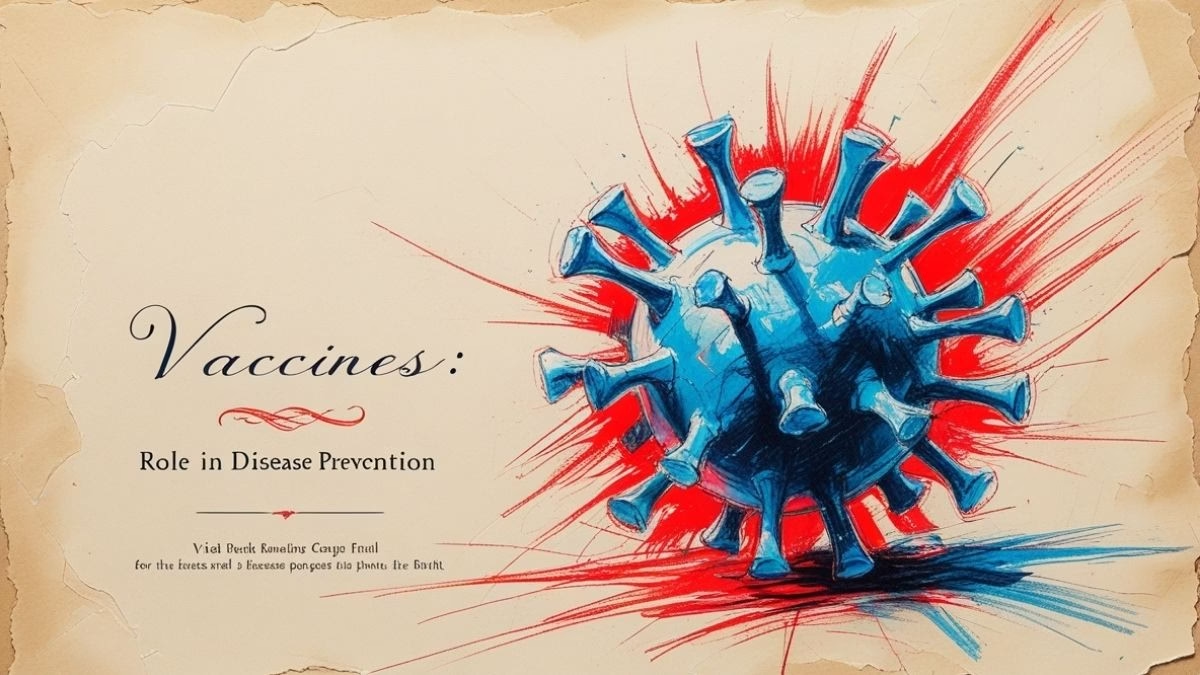Reading Scientific and Factual Texts
Welcome! The passage you are about to read is scientific in nature. On exams like the SAT, TOEFL, and IELTS, you will often encounter texts that explain a scientific process or a public health issue. These passages are dense with facts, technical terms, and cause-and-effect relationships.
To excel with these texts, sharpen these specific reading skills:
- Focus on Cause and Effect: Scientific texts are all about causality. As you read, actively look for how one thing causes another. Use keywords like “because,” “leads to,” “as a result,” and “stimulates” to identify these links. The questions will almost certainly test your understanding of these processes.
- Don’t Panic Over Technical Terms: You will see words you don’t know (e.g., “pathogen,” “antibody”). Don’t panic! The passage will almost always provide a definition or enough context for you to understand the word’s role in the sentence. Focus on the function of the term, not on memorizing a perfect definition.
- Distinguish Fact from Claim: Understand what the passage presents as established scientific fact versus a claim or a point of controversy. In today’s text, for example, notice how the author explains the scientific consensus on vaccine efficacy versus the nature of public hesitancy.
- Track the Main Idea of Each Paragraph: Each paragraph will have a specific job: one might explain the mechanism, another the history, and a third the societal impact. Identifying the purpose of each paragraph will help you locate answers more quickly.
- Pacing is Paramount: You need to be efficient. For this passage and the 10 questions that follow, a good goal is to finish everything in 18-20 minutes. Practice this timing to build your stamina and confidence for test day.
This passage on vaccines is a great way to hone these skills. Good luck!
Reading Passage
[ppp_patron_only level=5]
Vaccines represent one of the most transformative public health achievements in human history, credited with the dramatic reduction and, in some cases, eradication of numerous infectious diseases that once ravaged populations. The fundamental principle behind vaccination, a process also known as immunization, is to stimulate the body’s own immune system to protect against subsequent infection or disease. It is a proactive measure that prepares the body for a future encounter with a harmful agent, rather than waiting to treat an illness after it has already taken hold.
The mechanism of a vaccine relies on the immune system’s remarkable ability to recognize and remember foreign invaders. The immune system is designed to identify pathogens—disease-causing agents like viruses and bacteria—by detecting specific molecules on their surfaces, known as antigens. When a pathogen enters the body for the first time, the immune system launches a primary response, which can be slow and may not be sufficient to prevent illness. However, during this response, it creates memory cells. A vaccine introduces a safe, modified version of a pathogen, or just a piece of it (an antigen), into the body. This agent is attenuated (weakened) or inactivated, so it cannot cause the actual disease. The immune system, however, recognizes it as foreign and mounts a response, producing specialized proteins called antibodies and, crucially, those long-lasting memory cells. If the vaccinated individual is later exposed to the actual, virulent pathogen, their immune system is primed. The memory cells facilitate a swift and potent secondary response, neutralizing the invader before it can cause significant illness.
The benefits of vaccination extend beyond the individual to the entire community, a concept known as “herd immunity” or community immunity. When a sufficiently high percentage of a population is immune to a disease, the chains of transmission are disrupted. This makes it much more difficult for the pathogen to spread and find susceptible hosts. Consequently, herd immunity provides a crucial layer of protection for individuals who cannot be vaccinated, such as infants too young to receive certain vaccines, people with compromised immune systems (e.g., those undergoing chemotherapy), and the small percentage of people for whom a vaccine is not effective. The threshold required for herd immunity varies depending on the contagiousness of the disease; for a highly infectious virus like measles, it is estimated that 95% of the population needs to be vaccinated to protect the entire community.
Despite their overwhelming record of success and the robust scientific consensus supporting their safety and efficacy, vaccines have faced intermittent public hesitancy and opposition. This phenomenon is not new, dating back to the earliest days of inoculation. Modern vaccine hesitancy is often fueled by misinformation spread rapidly through social media, celebrity endorsements of debunked theories, and a general mistrust of scientific institutions and pharmaceutical companies. One of the most pervasive and damaging myths linked vaccines to autism, a claim based on a fraudulent 1998 study that has since been thoroughly discredited and retracted, with its lead author losing his medical license. Numerous large-scale epidemiological studies conducted across the globe have found no link between any vaccine and autism.
Addressing vaccine hesitancy is a critical public health challenge. It requires a multi-pronged approach that includes transparent communication from health authorities, building trust between patients and healthcare providers, and promoting science and media literacy to help the public better evaluate sources of information. The continued success of vaccination programs, which protect us from the resurgence of devastating diseases, depends not only on scientific advancement but also on public trust and collective responsibility.
Reading Quiz
[/ppp_patron_only]
Keywords & Phrases
Eradication:
What it means: The complete destruction or elimination of something. In a medical context, it means to wipe out a disease completely from the entire world (like smallpox).
How it was used in the reading: The author uses this to describe the ultimate success of some vaccination campaigns. “…the dramatic reduction and, in some cases, eradication of numerous infectious diseases…”
Pathogens:
What it means: A technical term for a bacterium, virus, or other microorganism that can cause disease.
How it was used in the reading: This word is used to name the disease-causing agents that the immune system and vaccines are designed to fight. “The immune system is designed to identify pathogens…”
Attenuated:
What it means: This is a scientific term meaning “weakened.” An attenuated virus is one that has been modified so that it is less harmful.
How it was used in the reading: The author uses this technical term to explain why vaccines are safe—the virus inside them has been weakened so it cannot make you sick. “This agent is attenuated (weakened) or inactivated…”
Susceptible hosts:
What it means: ‘Susceptible’ means likely to be influenced or harmed by something. A ‘host’ is an organism that harbors another organism (like a virus). A ‘susceptible host’ is a person who is vulnerable to getting sick from a particular disease.
How it was used in the reading: This phrase is used to explain herd immunity: when many people are vaccinated, it’s harder for a virus to find an unvaccinated, vulnerable person to infect. “…for the pathogen to spread and find susceptible hosts.”
Contagiousness:
What it means: This is the quality of how easily a disease can be spread from one person to another.
How it was used in the reading: The author uses this to explain why the herd immunity threshold is different for different diseases—more contagious ones require a higher vaccination rate. “…varies depending on the contagiousness of the disease…”
Intermittent:
What it means: This adjective describes something that occurs at irregular intervals; not continuous or steady.
How it was used in the reading: The author uses it to show that vaccine hesitancy isn’t a constant, steady problem, but one that has flared up at different times throughout history. “…vaccines have faced intermittent public hesitancy and opposition.”
Pervasive:
What it means: An adjective describing something (especially an unwelcome influence or physical effect) that spreads widely throughout an area or a group of people.
How it was used in the reading: It’s used to describe how widespread the false claim about vaccines and autism became. “One of the most pervasive and damaging myths…”
Thoroughly discredited:
What it means: To ‘discredit’ something is to harm its good reputation or to prove that it is false. To be ‘thoroughly discredited’ means that something has been completely and decisively proven to be untrue.
How it was used in the reading: The author uses this strong phrase to leave no doubt that the study linking vaccines and autism is not just questionable, but has been proven to be false. “…a fraudulent 1998 study that has since been thoroughly discredited and retracted…”
Epidemiological studies:
What it means: ‘Epidemiology’ is the branch of medicine that deals with the incidence, distribution, and possible control of diseases. ‘Epidemiological studies’ are large-scale scientific studies that look at disease patterns in human populations.
How it was used in the reading: The author refers to these types of studies as the high-quality evidence used to debunk the autism myth. “Numerous large-scale epidemiological studies conducted across the globe have found no link…”
Multi-pronged approach:
What it means: A ‘prong’ is a sharp point, like on a fork. A ‘multi-pronged approach’ is a strategy or plan that involves taking action in several different areas at the same time to solve a problem.
How it was used in the reading: This phrase is used to indicate that solving vaccine hesitancy isn’t simple and requires tackling the problem from multiple angles at once (communication, trust, education). “It requires a multi-pronged approach that includes transparent communication…”










0 Comments